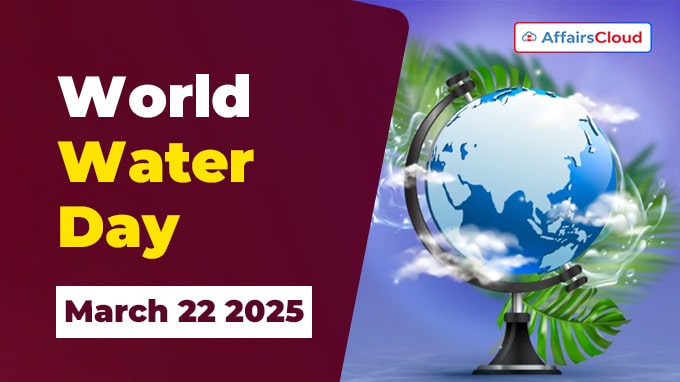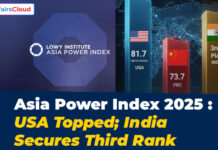 The United Nations (UN’s) World Water Day is observed annually across the globe on 22 March to highlight the importance of freshwater and address the global water crisis.
The United Nations (UN’s) World Water Day is observed annually across the globe on 22 March to highlight the importance of freshwater and address the global water crisis.
- The theme for World Water Day 2025 is ‘Glacier Preservation’, emphasizes the critical role of glaciers in freshwater supply and the urgent need for conservation amid climate change.
Note:In 2025, the United Nations Educational, Scientific and Cultural Organization (UNESCO) and the World Meteorological Organization (WMO) are the leading UN agencies responsible for the celebration.
Background:
i.Proposed during the 1992 UN Conference on Environment and Development (UNCED) in Rio de Janeiro, Brazil.
ii.Officially adopted by the UN General Assembly (UNGA) via Resolution A/RES/47/193 in December 1992.
- The day was first observed on 22 March 1993.
iii.The day was annually organized by UN-Water and led by one or more of its Members and Partners with relevant mandates.
Significance:
i.Raises awareness about 2.2 billion people lacking access to safely managed drinking water.
ii.Supports Sustainable Development Goal (SDG) 6: Ensuring water and sanitation for all by 2030.
UN World Water Development Report 2025:
i.The 2025 World Water Development Report (WWDR), titled ‘Water Towers: Mountains and Glaciers’, is published by the UNESCO under UN-Water.
ii.It underscores the need for urgent climate action to protect glaciers, vital for achieving SDG 6.
Key Findings:
i.It warns that as the climate continues to warm, many glaciers will “inevitably” vanish in the coming decades. Projections indicate that a temperature rise of 1.5-4 °C (Degree Celsius) could lead to glaciers losing 26-41% of their 2015 mass by 2100.
ii.The report highlights a wide range of impacts, including reduced water for drinking and agriculture, stress on local ecosystems and increased risk of “devastating” glacial lake outburst floods (GLOFs).
iii.Glaciers in Asia-Pacific (Third Pole) are retreating faster than the global average, threatening water security for 2 billion people downstream.
iv.The Hindu Kush Himalaya (HKH) region in Central and South Asia holds the largest ice reserves outside the polar areas, glaciers are retreating at an alarming pace.
- Between 2011 and 2020, the rate of glacier loss was 65% faster than in the previous decade (International Centre for Integrated Mountain Development (ICIMOD), 2023).
v.By 2050, river flows are expected to decline by 40%, posing a threat to food and energy security.
2025 Events in India:
On World Water Day 2025, the Ministry of Jal Shakti (MoJS), in collaboration with the Ministry of Environment, Forest & Climate Change (MoEFCC) and the Government of Haryana, launched Jal Shakti Abhiyan: Catch the Rain (JSA:CTR) – 2025 in Panchkula, Haryana.
- Union Minister Chandrakant Raghunath Patil, MoJS and Nayab Singh Saini, Chief Minister (CM of Haryana) launched various water conservation works in Haryana.
i.The initiative targets 148 districts across India, promoting collaboration between government agencies, communities, and stakeholders to ensure sustainable water resource management and make the vision of “Every Drop Counts” a reality.
ii.The campaign, titled ‘People’s Action for Water Conservation – Towards Intensified Community Connect,’ focuses on the urgent need for water security, rainwater harvesting, and groundwater recharge to address climate change and growing water challenges.
iii.During the event ‘Jal-Jangal-Jan: Ek Prakritik Bandhan Abhiyan’ (Water-Forest-People: The Intrinsic Bond campaign) launched to strengthen the ecological connection between rivers, springs, and forests.
iv.e-launched of the ‘Mukhyamantri Jal Sanchay Yojana’ and the Water Resources Atlas for Haryana to support scientific water resource management.




